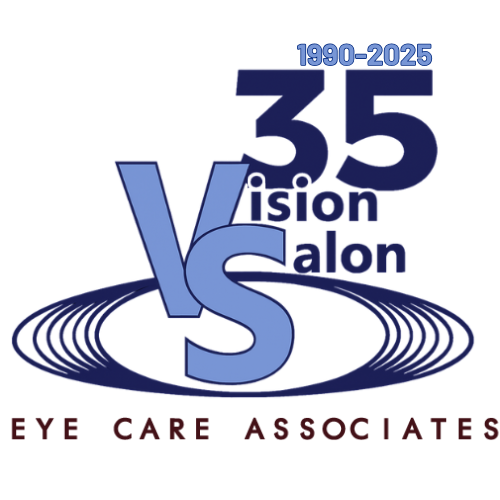Diabetes can have a significant impact on your vision, especially if it’s not well-managed. High blood sugar levels can damage the blood vessels in your retina, leading to serious issues like diabetic retinopathy, macular edema, and even vision loss.
Not everyone with diabetes faces the same level of risk. Some factors can make certain people more likely to develop these eye problems. Regular diabetic eye exams can catch problems early and keep your vision healthy in the long run.
Here are some common risk factors that can increase the likelihood of diabetic eye problems:
1. Having diabetes for a long time
The longer you’ve had diabetes, the greater your risk for diabetic eye issues.¹ Studies show that about 80% of people with type 1 diabetes develop some form of retinopathy after 15 years.² The risk of this, along with other complications like kidney and nerve damage, rises the longer someone has the condition.
2. Poor blood sugar management
Controlling your blood sugar levels helps prevent diabetic eye problems. People who have difficulty managing high blood glucose or high blood pressure are more likely to face retinal damage and vision loss.¹
3. High blood pressure & cholesterol
When you have diabetes along with high blood pressure or high cholesterol, your risk for eye problems increases. These conditions can damage the blood vessels in your eyes, resulting in vision loss.
4. Smoking
If you smoke and have diabetes, quitting can help improve your overall health as well as your eye health. Smoking adds extra stress to your blood vessels, raising the risk of vision problems. By reducing or quitting smoking, you can significantly lower your chances of developing diabetic eye issues.
5. Pregnancy
6. A family history of eye disease
If eye diseases run in your family, you may be at a higher risk for diabetic eye problems. This is why your optometrist asks about your family history during an eye exam.
If you have a family history of eye disease, it is important to schedule regular eye exams, so we can check for symptoms and treat conditions in the early stages.
7. Ethnicity
Certain ethnic groups, such as African Americans, Hispanics, and Native Americans, have a higher risk of developing diabetic eye disease. This increased risk can be due to a combination of genetics and lifestyle factors.
What you can do to lower your risk
It’s not always possible to prevent diabetic eye disease, but there are ways to lower your risk and protect your vision. Managing your blood sugar, exercising regularly, and eating a balanced diet all help reduce the chances of developing serious eye issues. Regular eye exams also play a critical role since they allow your eye doctor to catch warning signs early on before they turn into serious problems.
How Vision Salon Eye Care Associates can help
At Vision Salon Eye Care Associates, we take diabetic eye care seriously. Our eye doctors in Blue Island have completed extra hours of post-doctorate education focused on diabetic eye health, enabling us to provide the most up-to-date diagnosis and treatment options for our patients.
We’ve also invested in advanced technology that allows us to go beyond the standard level of care for diabetic eye conditions. To make sure you’re getting the best overall care, we work closely with your primary care physician. We reinforce the treatment plan they’ve recommended to help manage your diabetes and prevent eye problems.
Along with medical treatment, we also offer lifestyle advice to help you manage diabetes in your daily life. If you’re diabetic, pre-diabetic, or at a higher risk, we can help you manage your eye health and prevent potential issues. For more advanced care, we work with highly skilled ophthalmic surgeons to ensure you receive the best surgical and retinal care when necessary.
Please schedule a diabetic eye exam in Blue Island, and we’ll work with you to help protect your vision for the long term.
References:





